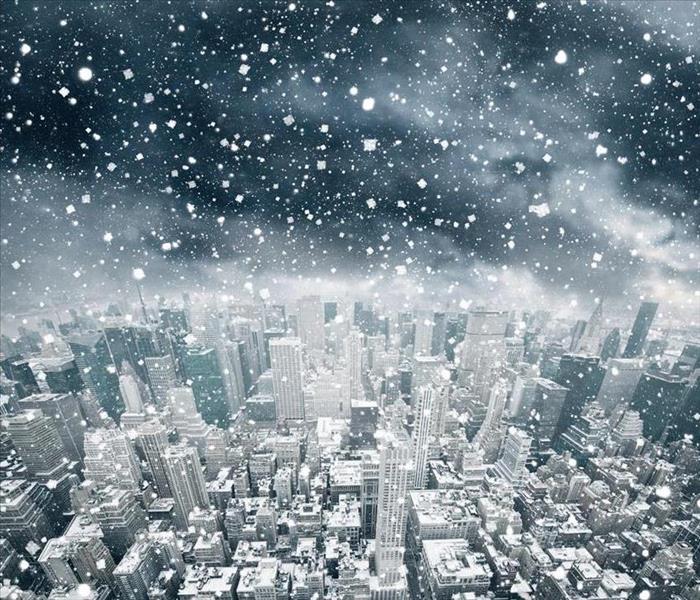How Much Damage Can a Winter Storm Do?
2/23/2022 (Permalink)
 Prevent Storm Damage by following These Tips related to Winter Storms. For more information, just call us.
Prevent Storm Damage by following These Tips related to Winter Storms. For more information, just call us.
Homeowners are usually well aware of the potential hazards of a winter storm; they expect snowfall, ice accumulation, and the potential for slips and falls and car accidents. Still, most remediation specialists in Salt Lake City, UT, also warn of potential structural damage.
While homes in heavy snow climates will usually have the qualities and characteristics that allow them to withstand heavy snow and frigid temperatures, homeowners still need to be aware of their responsibilities to ensure quality home care.
There are several things you want to do to ensure your home is protected from the encroaching winter weather.
- Shovel and salt pathways
- Maintain a clear and clean roof
- Assess seals on all entryways and windows
- Check the HVAC system
Winter Storm Damage and Recovery
A blizzard can be a common winter storm, and it brings with it frigid temperatures and a tremendous amount of snow. While these storms present significant travel threats, they also present risks to your house. The weight of the snow can lead to extensive roof damage; the temperatures can result in cracked windows, and heavy ice might result in power outages.
While there are multiple threats to your property during a winter storm, it is necessary to focus on a quick recovery after the storm. Wintertime is no time to be without power or heat. You should contact a mitigation professional so they can provide a quick response and recovery.
Common Damages During a Winter Storm
Winter storms will often result in roof damage because of snow and ice buildup. Depending on the style of your roof and its integrity, the weight of the snow could cause minor to severe collapses. If the roof is strong enough to hold out, it is possible that it will succumb to water damage.
When ice builds along the edges of a roof, it creates ice dams. As the weather warms, these dams and the snow melt, forcing the water to find alternative exits. Unfortunately, the water will typically back up under the shingles and soak into the sheathing. If enough water makes it to the underlayer of the roof, it could rot the wood or cause mold.
Aside from roof damage, the cold and ice can lead to power outages and window and door damage. Depending on the style of your HVAC system, you could lose heat during a winter storm. If the heat is out for too long, the frigid temperature could cause windows and doors to crack.
Fundamental Recovery From the Storm
After a winter storm, you should assess your property. You want to look for cracks in windows and inspect the thickness of the snow on the roof. You should be careful if you get on a ladder in the snow. The steps can become slick, resulting in falls. It is better to call a remediation professional to the scene. These specialists have the right tools to make professional property assessments.
A severe winter storm is nothing to play around with. You want to remain sheltered during the storm, but you should assess your property afterward to assess potential damage. Contact a remediation company if you need help.





 24/7 Emergency Service
24/7 Emergency Service